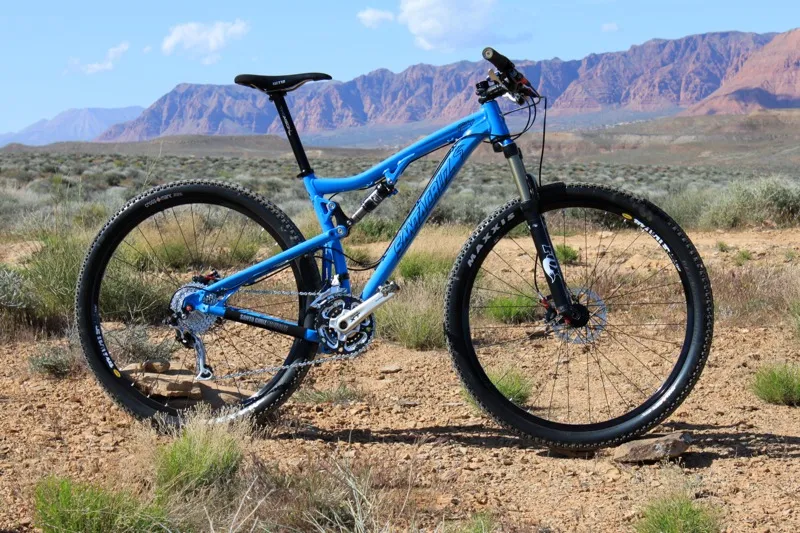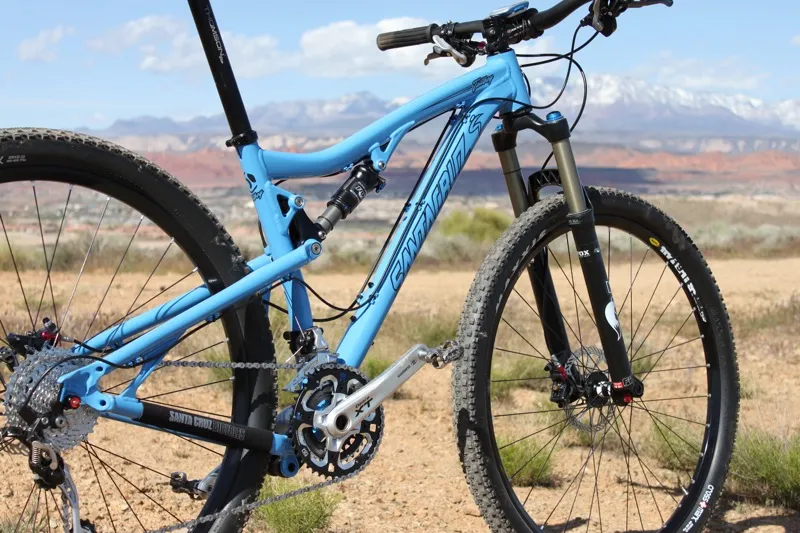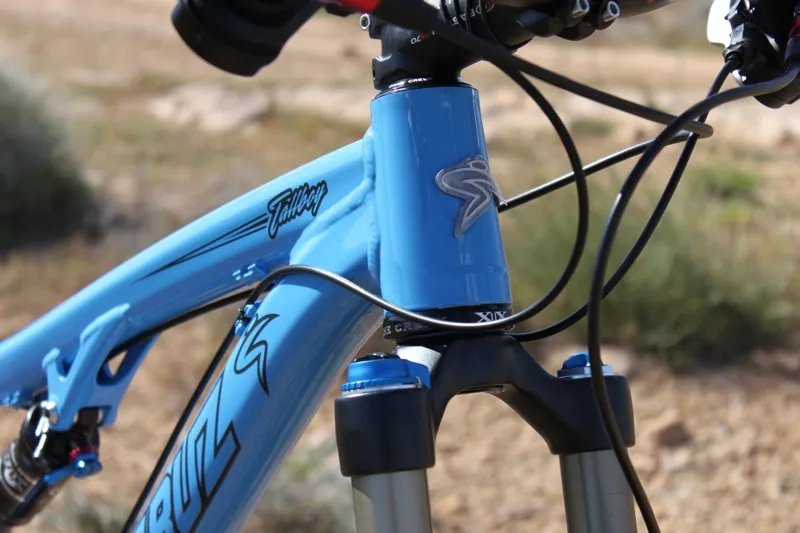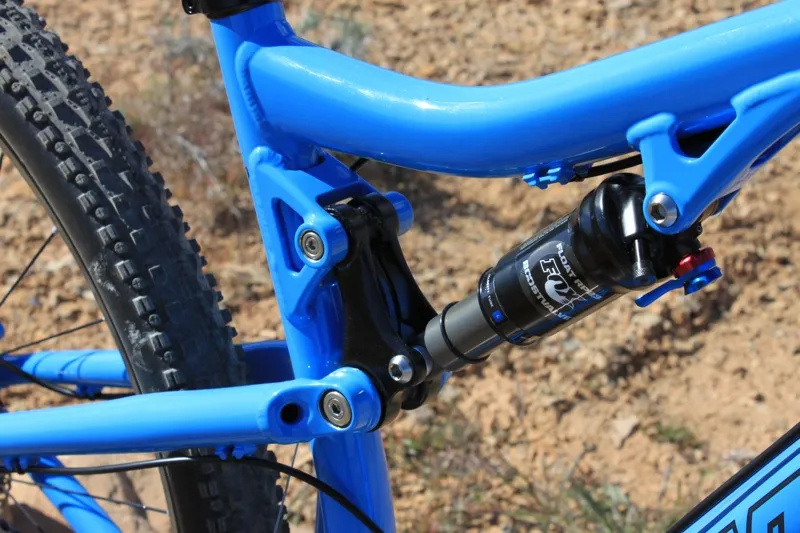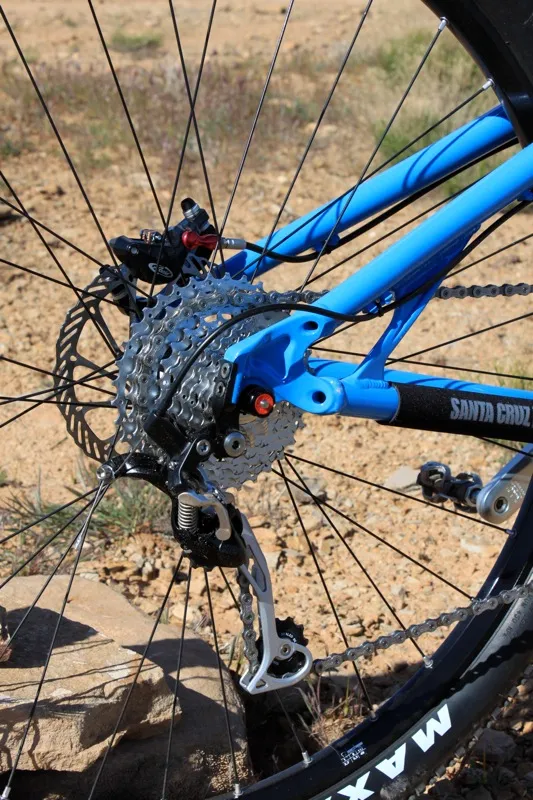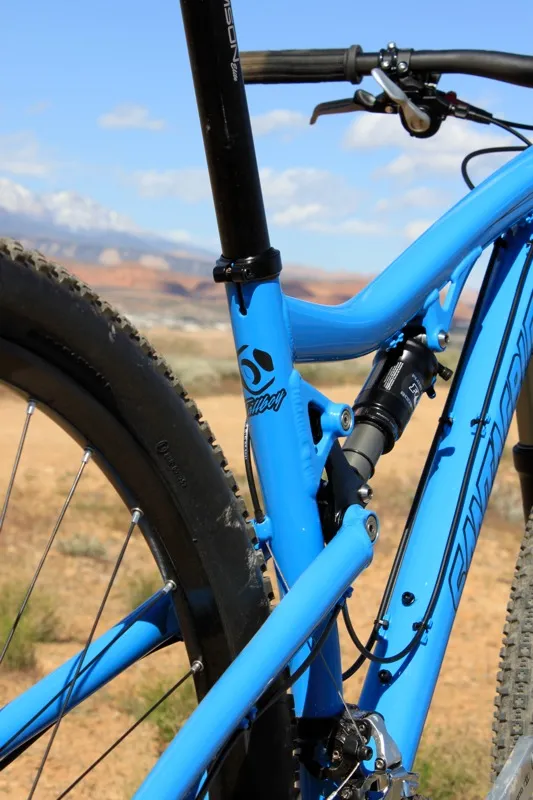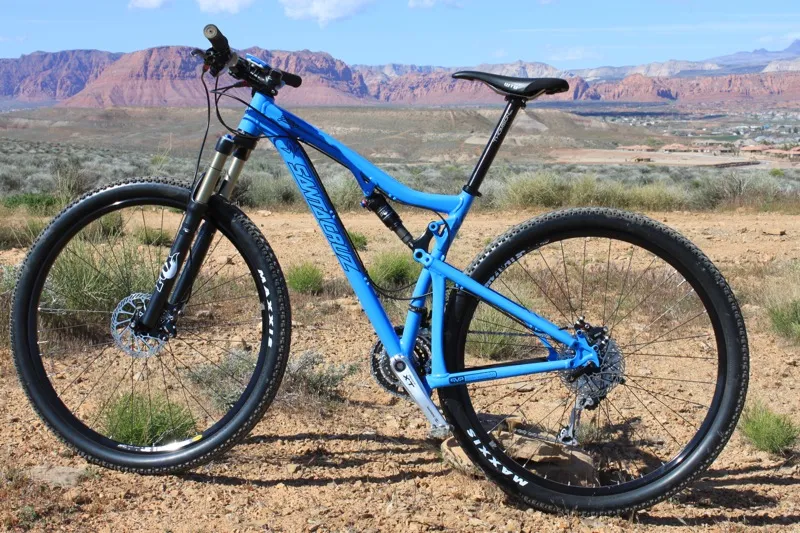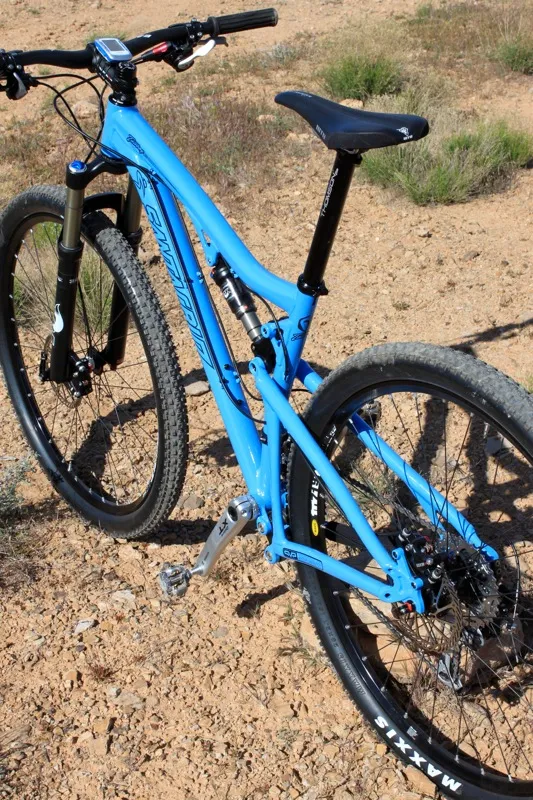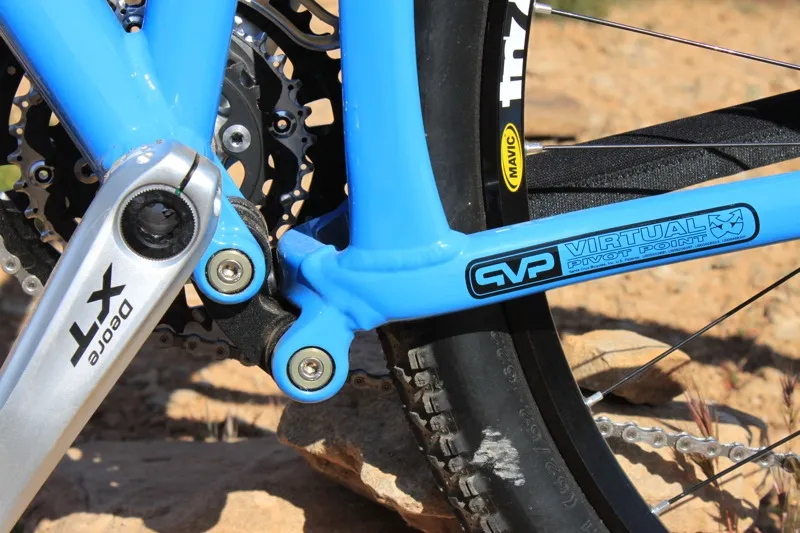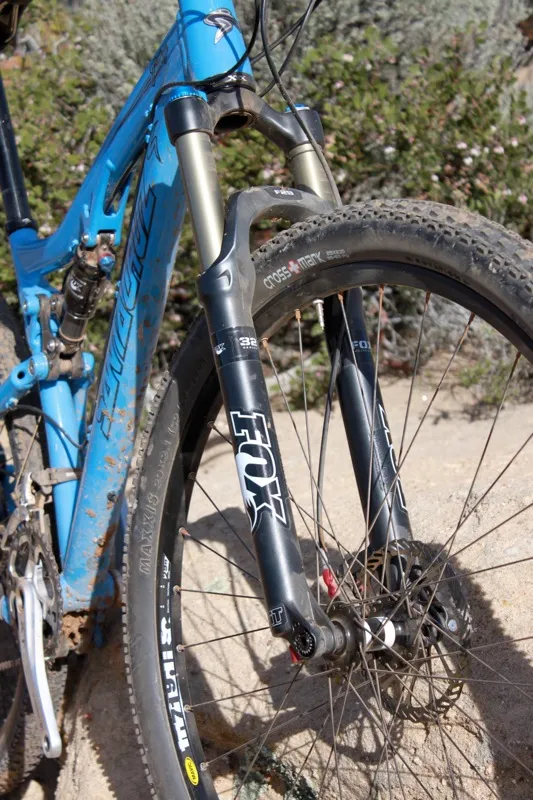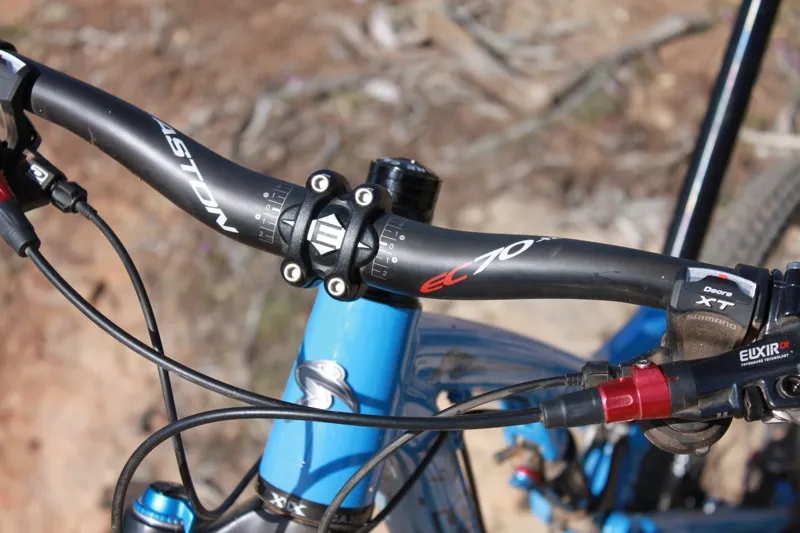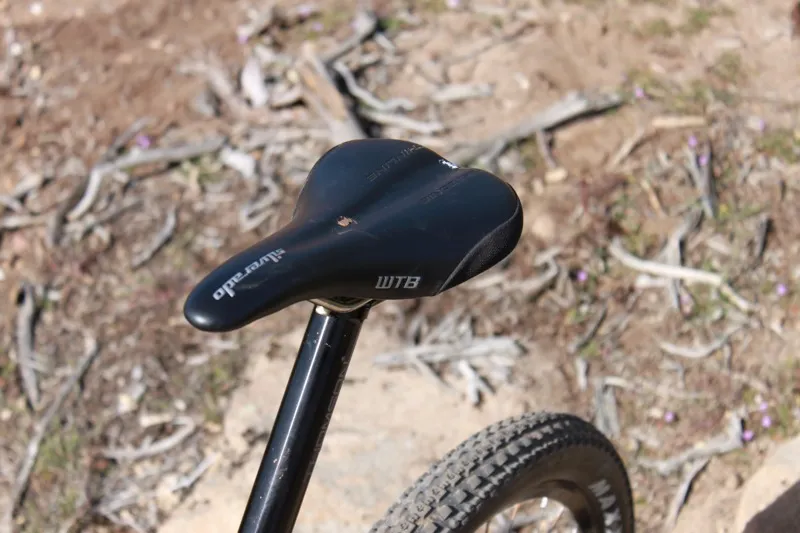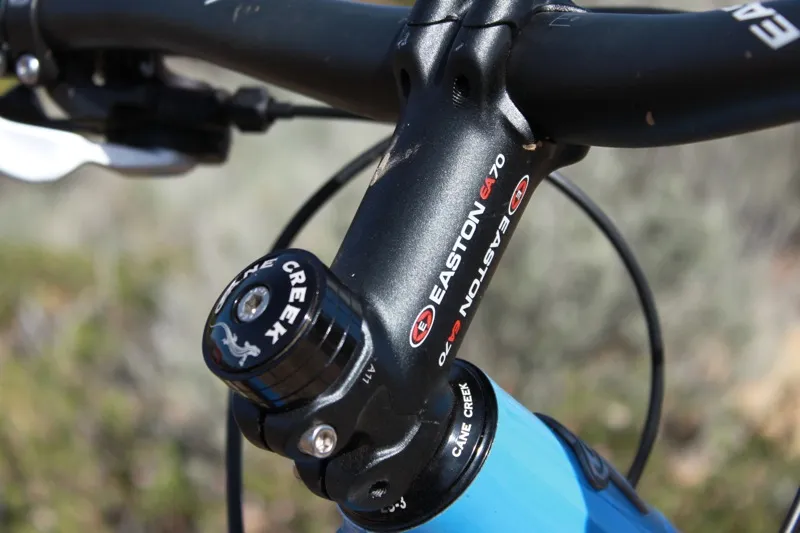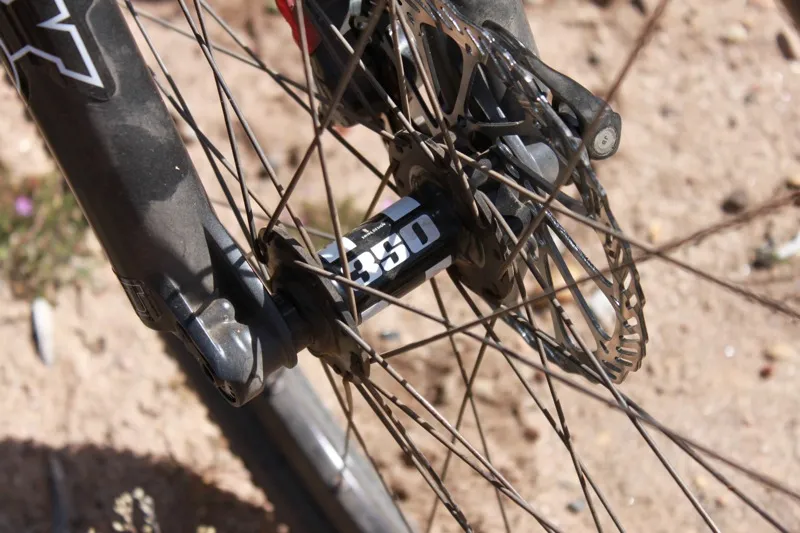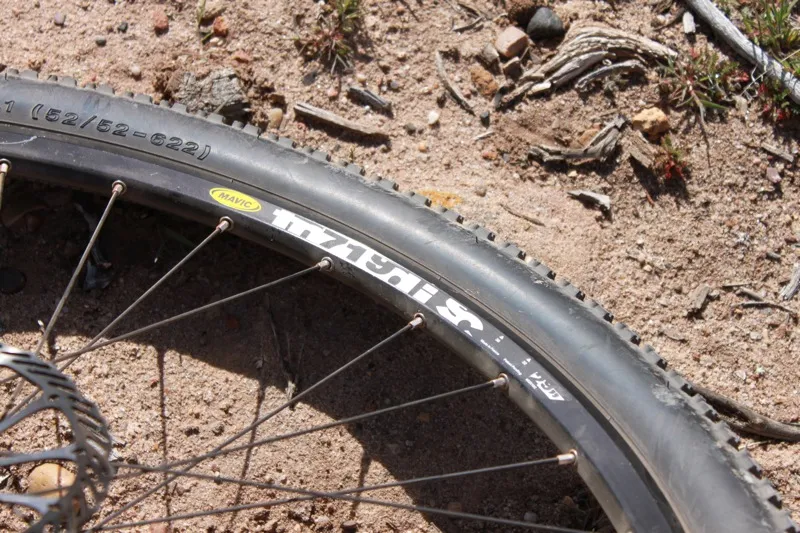We had our first ride on the new alloy Tallboy back in March, at Santa Cruz's 2012 media launch. Since then we've had an XL sized model at our disposal to throw into the rotation on a regular basis, and we now have a few things to add to the initial impression.
Ride & handling: Very manageable for a big-wheeler
The Tallboy begs to be ridden hard, and it would be comfortable to do so all day. The VPP suspension and big wheels eat up rough terrain, though the 4in (100mm) of rear travel limits the Tallboy to drops of a couple feet or so. The chassis is more than happy to accept a dropper seatpost, with cable bosses for one, and under the right rider, it’s put to good use.
The VPP linkage fights rider-induced squat quite well, which gives the front end a light and poppy feel, especially when combined with relatively short 445mm chainstays. The wheelbase is kept at a manageable length by the short rear end and 71° head tube angle. The trade-off of this fairly steep front end is an occasional tendency to oversteer when pushing into turns.
We rode the bike with a 4.73in (120mm) Fox F29 RLC fork and found the extra travel over the rear end to be much appreciated and the added height manageable. The Tallboy has a tall front end but with a 5° stem we were still able to climb comfortably. The extra 20mm (0.79in) of travel slackens the head angle by roughly half a degree to 70.5°.
Our test bike’s weight of 28.6lb/12.97kg with Shimano XTR pedals (the medium weighs 27.77lb/12.59kg, without pedals) puts it firmly in the 'trail bike' rather than 'cross-country race' category. To this end, we feel the 120mm fork is well warranted, even preferred should your terrain require more cush. The weight of the bike makes the Tallboy a relatively slow climber, but the geometry, VPP suspension and big wheels make it very proficient at the task.
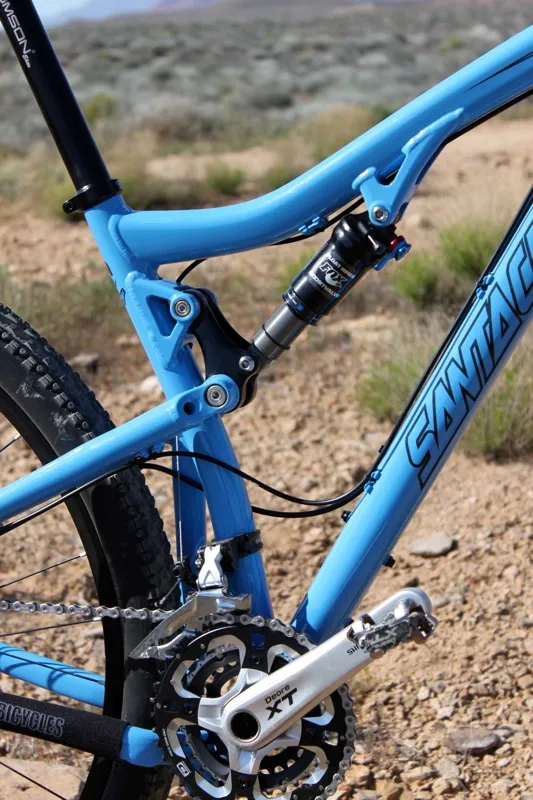
Our test model came equipped with Fox's RP23 rear shock; above its air can is the unused cable boss for a travel adjust seatpost
The Tallboy shines in technical terrain, where the big wheels eat up small- to medium-sized trail features that take more skill and effort to ride smaller wheels over. We were pleasantly surprised by how easy it is to loft the front wheel over obstacles, even when pointed downhill.
We rode numerous fall-away roll-in rock drops at Gooseberry Mesa outside of Hurricane, Utah on the bike. Multiple times we realized mid-move that we’d better level the bike before impact, and surprisingly we were able to; seemingly as easily as with a standard 26in-wheeled bike. On flat terrain, the Tallboy wheelies and even manuals quite well.
That's not to say that the Tallboy is up there with, say, Santa Cruz's 26in-wheeled Blur XC when it comes to hops, flicks, turns and tight terrain. But, and this is a big but, some people actually like – maybe even prefer – this slightly 'lazier' feel, particularly those who are used to riding longer-travel, slacker, 26in trail or downhill bikes.
The 1.5in tapered head tube houses an appropriately stout fork with tapered steerer and 15QR axle, and also accommodates an oversized down tube to help even more with steering precision. For a 100mm-travel cross-country trail bike, the Tallboy’s front end feels perfectly stiff, leaving the only notable bit of flex to be blamed on the front wheel.
Our size XL frame had a touch of flex around the bottom bracket under very heavy load. Though a slight amount of chain growth in VPP may add to this equation, the flex is bad enough to cause the chain to pop off the middle and small rings while powering up and over obstacles during steep climbs. Outside of these almost trials-like situations, the flex doesn't cause any issues but is still noticeable. Our smaller tester did not have this issue, so it could be due to frame size.

The non-drive side offers a better view of the VPP suspension design
The VPP suspension pedals very well from the saddle. Pedal-induced movement is perceptible with the RP23 shock's ProPedal switched off, but doesn’t zap enough energy to warrant switching the platform on for every pedaling section of trail, especially while spinning along seated. The Tallboy accelerates just fine for short out-of-saddle bursts, too. That said, having the ability to flip the ProPedal on was appreciated on longer climbs, smoother trails and getting to/from trailheads.
Descending performance is spot-on. The bike feels like it has plenty of travel when wheels are on the ground, though it does show limits on larger, ledge style drops. While our XL tester noted flex, our medium sized tester noticed the bike’s heft on climbs but never noticed any flex from the frame.
Frame: Alloy copy of the proven carbon chassis, with a new lower linkage
Santa Cruz built the Tallboy family of full-suspension 29ers backwards from their norm – carbon fiber first, then aluminum. As a result, the alloy Tallboy is likely heavier than it would have been if it had been designed first. This is because Santa Cruz were unwilling to give up too much of the stiffness designed into the carbon model. For this reason, the Tallboy aluminum also tops out at size XL.
Had Santa Cruz opted to make an XXL frame – the carbon Tallboy is available in this size – it would have made the new bike prohibitively heavy. That's because the same custom butted and shaped tubes (save for the top tube) and complete rear triangles are used on all alloy Tallboy models. Including a down tube stiff enough for the XXL size would have weighed down the entire line.
Both the geometry and evolved VPP suspension design carry over directly from the carbon model, as do the tapered head tube and adjustable angular contact linkage bearings. Running changes have taken place to the newly modified – now asymmetric – lower linkage, which is also newly equipped with thread-in, angled grease ports.
Our XL sized Tallboy – the aluminum bike will simply be known as Tallboy costs $1,850 with a Fox RP2 ($1,973 with an RP23) and weighs 6.67lb (2,020g) on our scale. The carbon versions cost another $700: a medium Tallboy Carbon frame costs $2,550 with a Fox RP2 shock (or $2,673 with Fox’s RP23) and has a claimed weight of 5lb (2,268g).
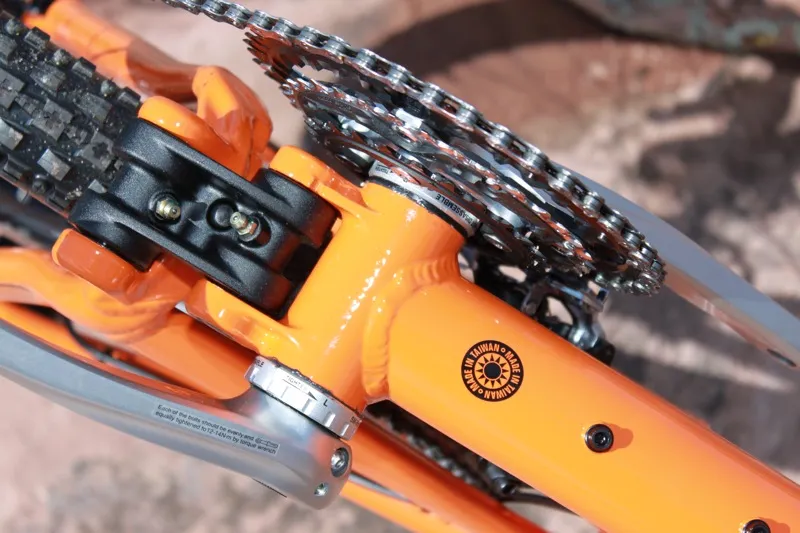
The alloy Tallboy features a new offset lower link that offers more chainring clearance and better protected grease fittings
Equipment: Mid-level spec makes it easy to compare
The 2011 SPX XC build we tested will set you back $4,199. That compares well to Giant’s top model Anthem X 29 at $3,725, Trek’s Superfly 100 at $4,929.99 and Specialized’s Epic Carbon Comp at $4,300. The Tallboy is positioned to give all of these bikes good competition, both in terms of price and performance.
A cheaper option is also available, with a Shimano Deore level 10-speed component package and RockShox Recon fork for $2,299 (yes, that's correct). These component downgrades are likely to push its weight up to or possibly past 30lb. Nonetheless it will make for a great, upgradable entry point.
Our test model was outfitted with top-of-the-line Fox suspension components, which performed very well. The fork's 120mm of travel and 15QR axle were appreciated, and the RLC damper allowed us to tune the fork as wanted. We matched it to the level ‘2’ ProPedal setting on the RP23 rear shock when locked out and ran three clicks (from open) of low speed compression all the time to help hold the fork up in braking and steeper descending.
Stopping was handled by Avid’s Elixir CR, which will likely be replaced by the new Elixir 9 model in the 2012 component package. Shimano’s 10-speed Dyna-Sys XT group handled drive duties. We didn’t use the granny gear during our rides on the Tallboy but we did put the 36-tooth cog to good use cranking up and down Gooseberry’s slow speed technical terrain. Both brakes and XT components performed without flaw.
The wheelset is made up of DT Swiss 350 hubs paired to Mavic TN719 Disc rims, shod in Maxxis 2.1in CrossMark tires and tubes. While we felt that performance was acceptable, we did note some distinct lateral flex in the big wheels when pushing through corners. We couldn't detect any flex coming from cockpit, frame or fork.
The supplied Easton EC70 bar is labeled as 685mm but ours ran a comfortable 700mm wide. The accompanying 90mm EA70 stem didn’t offer quite as much rigidity as something like an Easton Haven, but wasn’t anything close to a noodle, and should do the trick for all but the biggest of riders.
Proving that saddles are completely personal, there were opposing opinions on the WTB Silverado. One tester was stoked that it came with the build kit as it’s his personal favorite, while another felt it was hard on his backside and would’ve much rather opted for another choice. The saddle was mounted on a 30.9mm Thompson Elite seatpost.
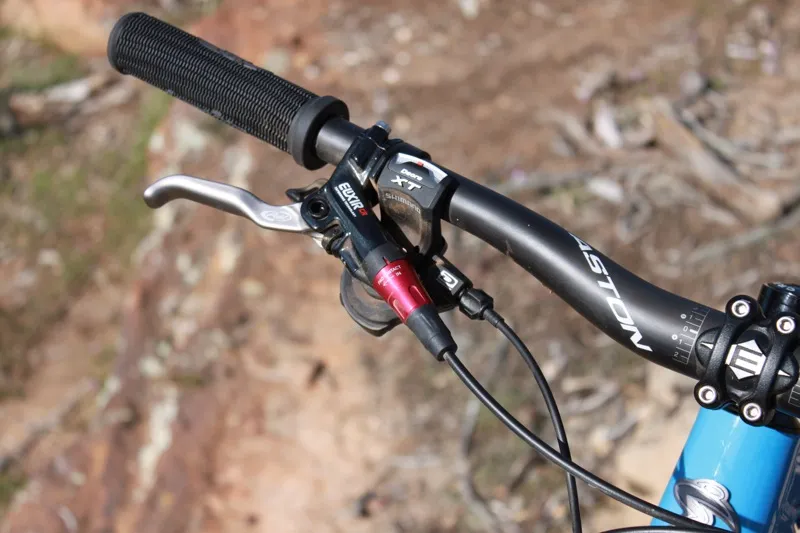
Avid's Elixir CR brake works well when bled properly; Shimano's XT drivetrain was flawless during our testing
